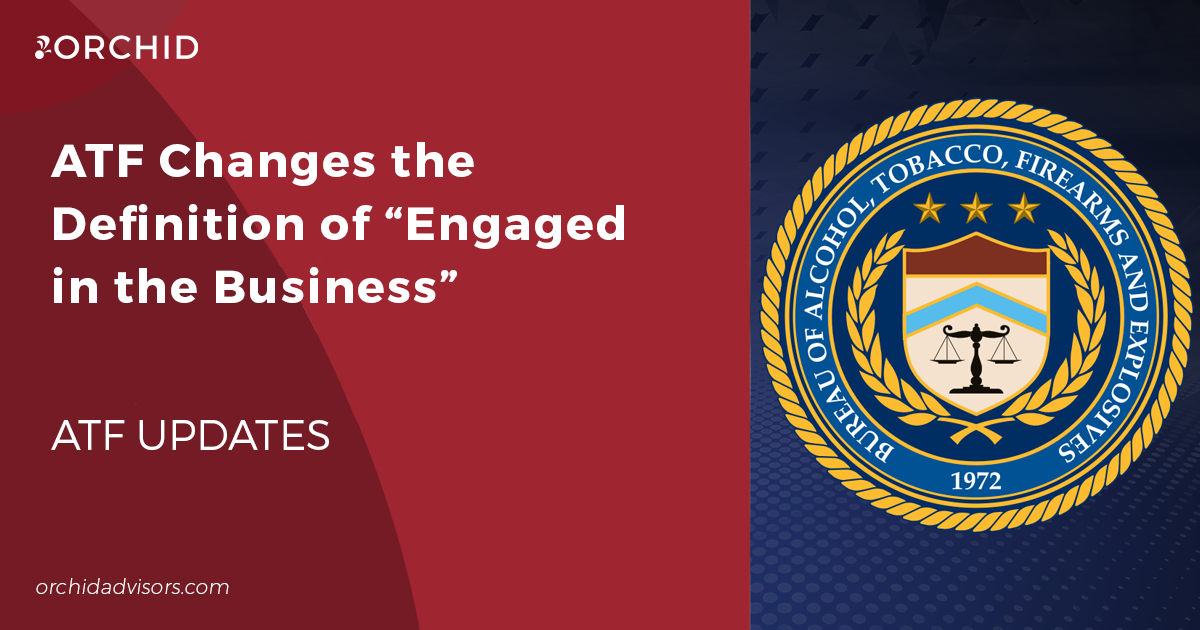Imports Updates
If you’re an importer of firearms, frames and receivers, barrels, or ammunition, there’s an additional set of laws and regulations governing your business activities. Of course you would first need to be licensed as an ATF FFL, specifically as an Importer (Type 08 or Type 11 License). You may also need a U.S. Munitions Import registration. If your activities fall within the scope of the National Firearms Act, you need still another registration; Special Tax Registration and Return. And somewhere along the way, you are likely to become familiar with ATF Form 5330.5, the “Application and Permit for Importation of Firearms, Ammunition and Implements of War.”
With all this paperwork, how do you learn about the history of the ATF decision-making process on the importation of handguns, semiautomatic rifles and shotguns? We have recently learned that the ATF has made the following changes to the articles covered on the United States Munitions List; how are these decisions made?
- Category I: I(e) has been removed. Riflescopes manufactured to military specifications no longer require a Form 6 for import.
- Category III: III(c) Ammunition belting and linking machines have been removed and no longer require a Form 6 for import.
- Category III: III(d) Ammunition manufacturing machines and ammunition loading machines have been removed and no longer require a Form 6 for import.
- Category IV: IV(f) Ablative materials have been removed and no longer require a Form 6 for import.
- Category VI: VI(a) Clarification was added that the vessels described must be equipped with offensive or defensive systems.
- Category VI: VI(b) Arresting gear, submarine storage batteries and catapults were removed an no longer require a Form 6 for import.
- Category IV: IV(f) Ablative materials have been removed and no longer require a Form 6 for import.
- Category VII: VII(g) Engines have been removed and no longer require a Form 6 for import.
- Category VII: VII(h) has been modified significantly to reflect the corresponding changes to the USML category.
- Category XIV: XIV(b) Biological agents have been removed as they are regulated by the Department of Agriculture and the Department of Health and Human Services. A Form 6 is no longer required for import.
- Category XIV: XIV(c) Equipment, including components, parts and accessories for the identification, detection and defense against toxicological agents have been removed from this category. A Form 6 is no longer required for import.
There are three major studies published by the ATF from their “Firearms Evaluation Panels.” The authority for the panels is anchored to the 1968 Gun Control Act, specifically 18 U.S.C. §925(d)(3). And the panels have released reports in years past.
Any work done by the 1968 panel reflected that imports of rifles and shotguns at that time were “conventional” and “specifically intended for sporting purposes.” What survives primarily is a two-page memo to the file with the minutes of the one-day meeting. The original panel recommended the adoption of “factoring criteria” to evaluate handguns. The ATF subsequently developed an evaluation sheet that is known as ATF Form 4590, against which the ATF continues to run a proposed import through a list of prerequisites and then scores pistols and revolvers for individual characteristics.
By contrast, the 1989 panel originated after two denials of import requests by the ATF, specifically the Striker-12 shotgun and the USAS-12 shotgun. The first working group was thus convened in 1989 to determine whether the semiautomatic rifles in question were generally semiautomatic versions of military assault rifles. Their findings identified certain characteristics or features that distinguished the rifles requested for import from those used for the traditional sports of hunting and organized marksmanship competitions. The panel confirmed the denials of import permit requests.
The 1998 panel was put together after a 1997 order of the President to inquire whether certain rifles being requested to import were modified versions of the rifles denied import in 1989. The 1998 panel emphasized the language from the Gun Control Act, identifying the standard as whether a firearm was “generally recognized as particularly suitable for or readily adaptable to sporting purposes.” Unlike the 1989 panel, which included industry representatives, the 1998 panel consisted of ATF and Department of Treasury representatives.
All three panels used a similar methodology, collecting materials from “outside sources,” including licensed hunting guides, state game and fish commissions, local hunting associations, competitive shooting groups, and hunting/shooting magazine editors. The panels used a combination of questionnaires, comments, and even advertising.
Of particular note among the data reviewed, the 1989 panel found the recommendations of editors to be “contradictory.” It recounted one editor’s opinion that the features making the rifle successful as a military firearm made it “totally unfit” for any other use. Another editor pointed out the specific advantages of the rifle over other sporting rifles, especially for the physically disabled and for left-handed shooters.
What does this discussion start to sound like?
Precisely the various allegations were going back and forth between plaintiffs and state governments over recently enacted legislation in CT, NY, and MD. Even as we traverse the history of the ATF working panels on firearms imports dating back to the late 1980s, we are simultaneously connecting to on-going debates some 35 years later.
What appears to be missing from the dialogue is that no product sits still. Whether a company is manufacturing firearms in the U.S. or abroad, whether the product is a firearm or an armchair, and whether the product is the first or the fifteenth version, all manufacturing responds to a combination of consumer demand, design engineers, available materials, and so forth. Products have an evolution and also a life cycle. They go through fads. They enter obsolescence. Products considered in a capitalism framework can change for reasons that have little to do with politics.
This history of firearms importation can be replicated in the history of cars at the National Traffic Safety Commission, factory equipment at the Occupational Safety and Health Administration, or pharmaceuticals at the Food & Drug Administration. In the global economy, every product area connects to consumers, businesses, and government.
And yes, even with respect to the product of firearms, the record of the Senate in 1968 reveals a concern that the Secretary of the Treasury would end up “unusually broad discretion” and would “…differ with the judgment of sportsmen expressed through consumer preference in the marketplace…” The legislative history of the statutory provision that gave rise to the ATF panels shows the insight of legislators that both the forces of capitalism and the forces of politics were about to collide.






0 Comments